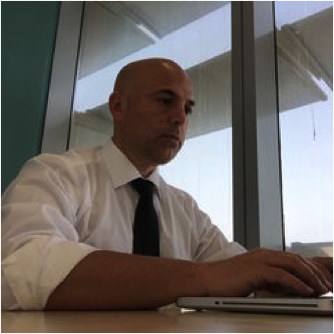
Interview with Guglielmo Baeli on the oil and gas sector • Apr 2018
Guglielmo Baeli shared his views and opinions with the GSEW team about the future trends in the oil and gas sector.
Mr. Baeli is a civil engineer with over 20 years of engineering and construction experience in oil and gas sector, civil and industrial sector, major public transport infrastructur, renewables, water treatments, and gathering systems.
He has vast experience in site supervision, accountancy, tendering and evaluation. Mr. Baeli is an expert in the field of construction methods and construction sequences above or below the ground.
Interview transcript
1. HOW WOULD YOU DESCRIBE THE FUTURE TRENDS THAT MIGHT RESHAPE THE O&G INDUSTRY IN THE NEXT DECADE?
In the latter part of the year and in the ones to come, the oil and gas sector is experimenting what can be defined as an economic recovery. In recent years, investments have stagnated and now this recovery will allow big players to reinvest resources.
Moreover, a great deal of the activity in the oil and gas sector is focused on OPEC countries and the U.S., but other regions may also play a key role in the coming years.
Oil and gas can be considered as a traditional sector, it has reacted in a rather different way than other industries to the on-going digital transformation. Only in recent times, we witnessed to the first analysis about the digitalization in O&G. However, it is remarkable that this phenomenon is growing sharply. The United States is where this process is increasing and where the major players are starting with important investments.
2. DO YOU BELIEVE THE ONGOING DIGITAL TRANSFORMATION WILL MOSTLY AFFECT THE VALUE CHAIN OR RATHER FINAL PRODUCTS?
The digital transformation will affect mostly some segments of the value chain in this specific sector. In my opinion, in the short and medium term, we cannot expect a radical and dramatic change in the trend. For the time being, final products are not at the heart of this transformation.
On the other hand, the value chain will considerably benefit from the digitalization. Production processes – from exploration to distribution – will become safer and more efficient. In this respect, big players are increasing their efforts and investments.
3. WHAT COULD BE THE MOST PROMISING AREAS ENABLING INNOVATIVE SOLUTIONS?
Talking about innovation, I think that drilling and exploration are the most interesting areas. These areas are at the cornerstone of Oil & Gas, where industries are investing efforts and resources to develop new solutions. This applies to the short-medium term.
The same reasoning cannot be applied to the long-term. In this context, the discussion is more focused on which types of resources will be utilized and exploited. We should have a different approach if we talk about new energies and the utilization of renewables.
The debate is still open on this topic: according to relevant analyses, investment and improved recovery techniques have already extended the life cycle and productivity of the oilfields. Therefore, I think that we should wait for 20/30 years to see major changes.
4. BY THE SAME TOKEN, DO YOU BELIEVE A MAJOR ROLE WOULD BE PLAYED BY TRADITIONAL PRIMES (e.g. BIG Oil & Gas) ?
OR DO YOU THINK A DISTRUPTIVE TRANSFORMATION COULD BE BROUGHT BY NEW ACTORS?
I do not think we will be able to see new important players, over the coming years.
The O&G market has significant entry barriers for potential new players due to the amount of the initial investment and the relevant know-how. Therefore, even the digital transformation – which is reshaping the market of other industrial sectors– is not easily allowing new actors to play a relevant role.
However, we can notice some exceptions. In this regard I am thinking mainly about large and important actors usually operating in other sectors that eventually decide to concentrate part of their efforts in Oil & Gas. An example is given by Kawasaki, the popular automotive manufacturer started to invest in energy power plants.
Thus, it is improbable to find a place for new players , such as start-ups, that can hardly bear the costs for developing new business in traditional O&G market.
5. DO YOU THINK CROSS-FERTILISATION COULD BE AN ASSET IN ACHIEVING A MORE SUSTAINABLE AND LONG-LASTING PROGRESS?
It is important to take into account the economic factor while analysing the O&G sector. O&G industries concentrate their efforts on core business activities, the crude oil production. Sometimes, primes tend to diversify their investments, especially towards more disruptive and impactful activities enabling a closer engagement of the general public.
The final goal of R&D drivers is indeed to contain the production costs which are generally entirely charged on the final consumer.
More articles of the category: Space Economy Articles
Space-based Solar Power: Contributing to achieving Net Zero...
Beyond Borders: Satellite Applications for Humanitarian Emer...
OECD Policy Paper: How the War in Ukraine is affecting Spac...
ESA Space Operations and Space Safety activities: supporting...
Seven Benefit Case Studies of ESA's Space Safety programme
ESA ARTES Partnership Projects, providing the satcom industr...
ESA Science Core Technology Development Success Story - Grou...
European Centre for Space Economy and Commerce (ECSECO) conc...
Europe decides to increase ESA’s budget by 17% compared to t...
The European Commission publishes the 2021 Edition of its Be...
OECD’s examination of Space Technology Transfers and their C...
PwC’s ‘Lunar market assessment: market trends and challenges...
FutureEO, critical enabler of EO benefits for the European e...
ESA TIA ARTES programme’s continuous boost to the commercial...
Terrae Novae: from inspiring Europe’s generations to support...
Exploiting the remarkable potential of space technology tran...
Technology developments for ESA science missions empowering...
Space Economy activities to support ESA Council at Ministeri...
ESA Space Economy Team presents a paper on “Statistic and th...
ESA-Eurostat workshop on a European Space Economy Satellite...
European Centre for Space Economy and Commerce (ECSECO) offi...
European Centre for Space Economy and Commerce (ECSECO) pres...
ESPI Yearbook 2021 – Space Policies, Issues, and Trends of t...
ESA Science Core Technology Development Success Story - Broa...
ESA Science Core Technology Development Success Story - Game...
ESA Science Core Technology Development Success Story - Fost...
ESA Science Core Technology Development Success Story - Crit...
ESA Science Core Technology Development Success Story - Unri...
ESA Science Core Technology Development Success Story - Firs...
ESA Technology Transfer Success Story - Closing the loop: ho...
ESA Technology Transfer Success Story - The missing layer: h...
ESA Technology Transfer Success Story - Cities as Spaceships...
ESA Technology Transfer Success Story - Space-style control...
ESA Technology Transfer Success Story - Using space heritage...
ESA Technology Transfer Success Story - No such thing as a w...
ESA Technology Transfer Success Story - Powering a village f...
ESA Technology Transfer Success Story - Space at home: using...
ESA Technology Transfer Success Story - Landing zone assessm...
ESA Technology Transfer Success Story - Uncovering the secre...
ESA Technology Transfer Success Story - From space debris to...
ESA Technology Transfer Success Story - Dry electrodes to mo...
ESA Technology Transfer Success Story - A new perspective: s...
Eurospace releases its annual Facts & Figures Report: The Eu...
ESPI Space Venture 2021 – Entrepreneurship and Investment in...
ECSECO open for membership registration on its official webs...
OECD's analysis of the impacts of Covid-19 on the Space indu...
Post-crisis scenarios for the space industry
Resilience of the space sector to the Covid-19 crisis
China’s Space Sector: Commercialisation with Chinese Charact...
The socio-economic value of satellite Earth observations: hu...
ESA Centre to develop Europe’s Space Economy and promote com...
The OECD Space Forum launches second phase of research oppor...
EARSC showcasing Copernicus uses for Environmental Complianc...
The OECD’s stand of “What is Impact Assessment”
Creation of the European Centre for Space Economy and Commer...
Value created by ESA's Space Systems for Safety and Security...
A closer look at the European Commission’s Guide to Cost-Ben...
EUSPA publishes EO and GNSS Market Report 2022
BEA’s “Estimating the United States Space Economy Using Inpu...
A closer look at the latest Earth Observation Services Indus...
ESPI Yearbook 2020 – Monitoring the development of the Europ...
EARSC workshop showcasing 24 Copernicus Sentinel value case...
SPAC and the Space Industry
G20 Space Economy Leaders Meeting 2021
ESA joins the Universeh inaugural conference to address the...
OECD’s approach to space sustainability and the economics of...
ESA announces winners of the Global Space Markets Challenge
Global Space Markets Challenge: Longlists announced
Top 12 companies selected in Global Space Markets Challenge
The Size & Health of the UK Space industry in 2019
Global Space Markets Challenge Competition
Copernicus Sentinel data supporting the pulp and paper indus...
Entrepreneurship and private investment trends in the Europe...
Metalysis–ESA Grand Challenge: team Malt wins first phase
Space Architecture: Economic impacts, future developments an...
ESA_Lab@UCLan: Assessing the public value of ESA programmes
ESA_Lab@Kozminski: A new bird in the nest of ESA_Lab
Call for participants: OECD's initiative on the value and su...
Financing SMEs: options for SMEs and Midcaps in Europe
Copernicus Sentinel Data supporting wine making in France
ESA_Lab@PoliBa: De’ remi facemmo ali
OECD’s analysis of the impacts of Covid-19 on the space indu...
Financing space: options for SMEs and midcaps in Europe
Discussing impact assessment of Big Science projects during...
ESA and Metalysis Organised the First Grand Challenge Midter...
Why it is important to keep investing in space during and af...
The benefits of Copernicus’ Sentinel data to society, enviro...
Join the First Online Global Space Economic Workshop
Join the Third Online Global Space Economic Workshop
Join the Second Online Global Space Economic Workshop
Watch again the GSEW Online
A closer look at OECD’s methodology for assessing the scient...
Non-space business? We want to hear from you
Discussing solutions at the Global Space Economic Workshop
The Covid Crisis: for European SMEs, this could be a breakth...
Value created by ESA's Clean Space Initiative
Value created by ESA's Ground Systems Engineering and Operat...
Value created by ESA Science Programme
Value created by ESA's Future Earth Observation Pillar
Value created by ESA Telecommunication Partnership Projects
ESA and Metalysis decide to suspend temporarily the Grand Ch...
Two Teams Competing for a Half-million Prize
Watch again the GSEF 19
Interview with Eric Morel de Westgaver on Europe's space eco...
Global Space Economic Forum: Space Creates Value
ESA at the New Space Economy European Expoforum
Kick off of Metalysis – ESA Grand Challenge: the Race to Min...
ESA Grand Challenge rewards solutions to complex problems
Advancing the understanding and measurement of the societal...
ESA Space Economy Brochure
The socio-economic impact of space activities
ESA at the New Space Economy European Expoforum
Space cybersecurity for smart cities
Setting the stage
Compete in a lunar economy
Last chance to join the competition
Interview with Giulia Pastorella on cybersecurity
Interview with Vincent Bastide on construction
Global Space Economic Workshop
Global Space Economic Workshop
Building cybersecurity at the Global Space Economic Workshop
ESA announces first Global Space Economic Forum
Welcome to the Global Space Economic Workshop
ESA Global Space Economic Forum
What is the Space Economy?
Measuring the Space Economy
Creating value
Challenges of future urban settlements on the Moon and Mars
Building and powering by disruptive innovation
Space workshops to power urban innovation
ESA at Station F: looking for applications to the first Gran...
Game changers for the ESA Grand Challenge
The Moon Race: Pioneering Sustainable Lunar Exploration
Metalysis–ESA Grand Challenge launched
A community of innovation at the Farnborough Airshow and ESA
Join us at Le Bourget to discuss space for commercial purpos...
Fuel the future by joining the Innovation Exchange
